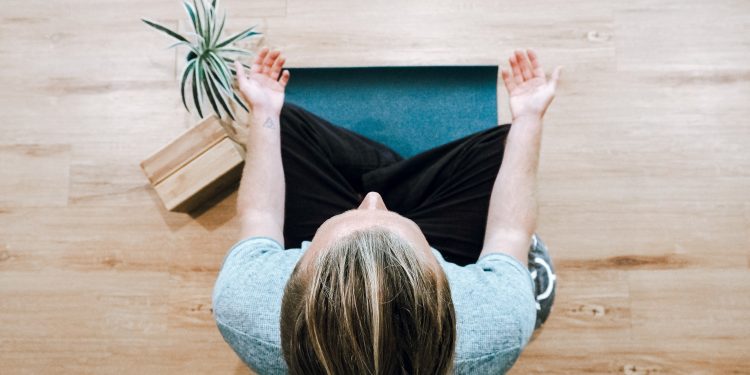Are you constantly feeling stressed, overwhelmed or anxious? Do you find yourself struggling to focus on the present moment and enjoy the little things in life? If so, it might be time to cultivate mindfulness into your daily routine. Mindfulness is a powerful tool that can help us live more fulfilling lives by bringing our attention to the present moment and reducing stress levels. In this blog post, we will explore various techniques for finding inner peace through mindfulness. Whether you’re new to meditation or looking for advanced tips, keep reading for practical advice on how to achieve a more mindful lifestyle.
The Benefits of Mindfulness
Mindfulness is a practice that has been gaining popularity in recent years, and for good reason. It offers numerous benefits that can help us lead happier and healthier lives.
One of the main benefits of mindfulness is stress reduction. By focusing on the present moment and accepting things as they are, we can become less reactive to stressful situations. This leads to reduced anxiety levels and an overall sense of calm.
In addition to stress reduction, mindfulness can also improve our relationships with others by increasing empathy and compassion. When we become more mindful, we develop a deeper understanding of ourselves and those around us, leading to stronger connections.
Furthermore, practicing mindfulness regularly can improve our physical health as well. Studies have shown that it can lower blood pressure, reduce chronic pain symptoms and boost immune system function.
There are countless reasons why incorporating mindfulness into your daily routine is worth considering. From reducing stress levels to improving physical health, this powerful practice has the potential to transform your life in many positive ways.
How to Be More Mindful in Everyday Life
Mindfulness is the practice of being present in the moment and fully engaged with your surroundings. It may seem difficult to be mindful when you have a hundred things on your mind, but it’s actually quite simple once you get started. Here are some tips for incorporating mindfulness into your daily routine.
Start by setting an intention for each day. This could be as simple as taking a deep breath before getting out of bed or reminding yourself to slow down and enjoy the little moments throughout the day.
When doing everyday tasks like washing dishes or brushing your teeth, focus on what you’re doing instead of letting your mind wander. Pay attention to how the water feels on your skin or how the bristles feel against your teeth.
Take breaks throughout the day to check in with yourself. Close your eyes and take a few deep breaths, allowing yourself to fully relax and let go of any tension.
When driving or walking somewhere, take notice of your surroundings – pay attention to what you see, hear, smell and feel around you. This can help ground you in that particular moment rather than letting distractions pull away from it.
Try not to multitask too much – especially during times where mindfulness would benefit you most such as mealtime or spending time with loved ones. Give full attention to one task at a time rather than trying to do multiple things at once which can ultimately lead us feeling overwhelmed and stressed out!
Tips for Getting Started with Mindfulness
Mindfulness is a practice that requires discipline, patience, and consistency. It’s not something you can master overnight, but with the right tips and mindset, getting started with mindfulness can be a lot easier than you think.
Firstly, it’s essential to set aside time for your mindfulness practice every day. Choose a time of day when you’re most alert and less likely to get distracted. Some people prefer to do it first thing in the morning before starting their day while others find nighttime more relaxing.
Next, find a quiet place where you won’t be disturbed during your meditation or breathing exercises. This could be anywhere from your bedroom to a park nearby or even at work during lunch breaks.
It’s also helpful to start small by giving yourself five minutes each session and gradually increase the length as you become more comfortable with the practice. Don’t worry if your mind wanders off initially; simply acknowledge those thoughts without judgment and bring back focus onto your breath.
Another tip is focusing on one task at hand- this means avoiding multitasking when eating meals or engaging in conversations so that you are present in that moment entirely without any distractions.
Don’t forget self-compassion during this process! Be kind to yourself if there are days where things don’t seem like they’re progressing how they should – remember this takes time!
By following these tips consistently over time will not only help establish mindful habits but also improve overall well-being through increased awareness of thoughts and emotions throughout daily life activities!
Dealing with Difficult Emotions through Mindfulness
Mindfulness can be a powerful tool in helping us deal with difficult emotions. Whether it’s anxiety, anger, or sadness, mindfulness practice can help us stay present and aware of our feelings without getting lost in them.
The first step is to acknowledge what we are feeling. Instead of pushing our emotions away or denying them, mindfulness encourages us to accept and observe them without judgement. This doesn’t mean ruminating on negative thoughts endlessly, but rather acknowledging the emotions as they arise and allowing ourselves to feel them fully.
Once we’ve acknowledged our difficult emotions, we can begin to practice self-compassion through mindfulness. We often judge ourselves harshly when experiencing negative emotions, which only exacerbates the situation. Mindfulness helps us cultivate self-compassion by treating ourselves with kindness instead of criticism.
Breathing exercises are another helpful technique for dealing with difficult emotions through mindfulness. Focusing on our breath allows us to calm down and ground ourselves in the present moment. Deep breathing also stimulates the parasympathetic nervous system which promotes relaxation.
Practicing gratitude can also help shift our focus away from negative thoughts and feelings towards positive ones. Taking time each day to reflect on things we are grateful for trains our minds to see more good in the world around us – which can lead to an overall sense of wellbeing.
In summary, dealing with difficult emotions through mindfulness involves acknowledging what we’re feeling without judgment or denial; practicing self-compassion; using breathing exercises; and cultivating gratitude each day – all tools that promote emotional regulation and resilience over time.
Advanced Mindfulness Techniques
Incorporating mindfulness into your daily routine can have a significant impact on your overall well-being. With consistent practice, you can learn to manage stress, reduce anxiety and find inner peace.
Once you have mastered the basics of mindfulness, there are many advanced techniques that you can explore to deepen your practice. These include body scanning meditation, loving-kindness meditation and mindful walking.
Body scanning meditation involves focusing on each part of the body in turn and observing any sensations without judgment. Loving-kindness meditation is about cultivating feelings of compassion for yourself and others. Mindful walking involves bringing awareness to the physical act of walking.
By incorporating these advanced mindfulness techniques into your life, you will be able to take your practice to new heights and experience even greater benefits.
Remember that becoming more mindful is a journey rather than a destination. It takes time and effort but with patience and persistence, it is possible to cultivate a deeper sense of inner peace that will stay with you throughout all aspects of life.




